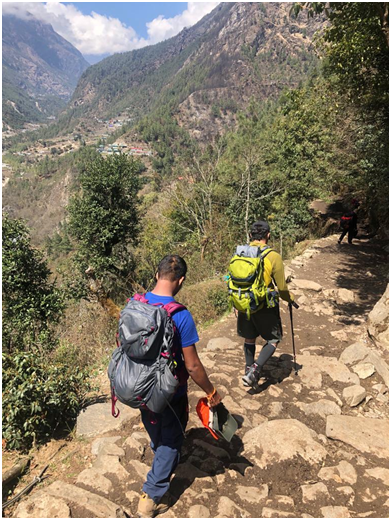Contrary to common advice, physical activity is very important for a person’s well being. But it can be challenging for people with diabetes, especially type 1 diabetes. Diabetics should be able to partake “in all forms of physical activity consistent with an individual’s desires and goals” in keeping with this philosophy, increasing numbers of people with type 1 diabetes now participate in extreme forms of physical activity, including high-altitude trekking and mountaineering. Like Nitin aged 28, who is an entrepreneur from Hyderabad .
High altitude trekking training and practice is feasible for patients with diabetes. This improves blood glucose, lipids, and fasting insulin concentrations, maintaining glucose control.
High altitude poses challenges which are not commonly faced.
Glycemic control gets affected at high altitudes. Diet and exercise actually have a greater effect on blood sugar levels at high altitudes. Loss of appetite is common, and slow food absorption can lead to hypoglycemia after meals followed by subsequent hyperglycemia. High Altitude symptoms can be very similar to symptoms of hypoglycemia.
Common symptoms of altitude sickness include:
- Shortness of breath
- Rapid heartbeat
- Nausea
- Exhaustion
- Increased exercise like hiking or walking a lot at greater height, definitely leads to low sugar levels.
At the same time managing type 1 diabetes while travelling or exercising can be a cause of stress and as is commonly known stress is a strong trigger for a rise in blood sugar levels.
It is imperative for a diabetic to carry an app connected glucometer kit which keeps him/her in direct touch with the diabetologist. Carrying a smartphone connected app with the device has a lot of advantages because it keeps the patient connected to the diabetologist at all times. This is particularly essential for impending emergencies.
Type 1 diabetics wanting to indulge in mountaineering or scaling heights is a great idea.
Physical health is a priority. The climber has to be in perfect health and fit enough to take the perils of mountaineering. Aerobic exercise is required to build up stamina which is very critical for any adventure sport especially mountain climbing. The muscles in the legs have to be very strong as they bear the brunt of the entire expedition. Maintain glycemic controls in high altitude like conditions.
There will be certain things to consider:
- Meet your endocrinologist before undertaking such an expedition, especially to very high altitudes. They may have to provide you with medication for altitude sickness which is most commonly caused by rapid ascension. The doctor may advise you to keep a slow and steady pace so that the body can acclimatize itself taking many breaks will help.
- Be conscious of the fact that the higher you climb, the less oxygen there will be. Keep this in mind to avoid exhaustion.
- Pack extra supplies like insulin, water, snacks and rapid acting sugar or glucose.
- Always listen to the body. Do not push beyond endurance.
Nitin will be in a better position to provide insight and advice along tips with his experience in climbing Mount Everest along with benefits of Apollo Sugar Clinic’s support for a person with type 1 diabetes to scale the highs and lows of life.











